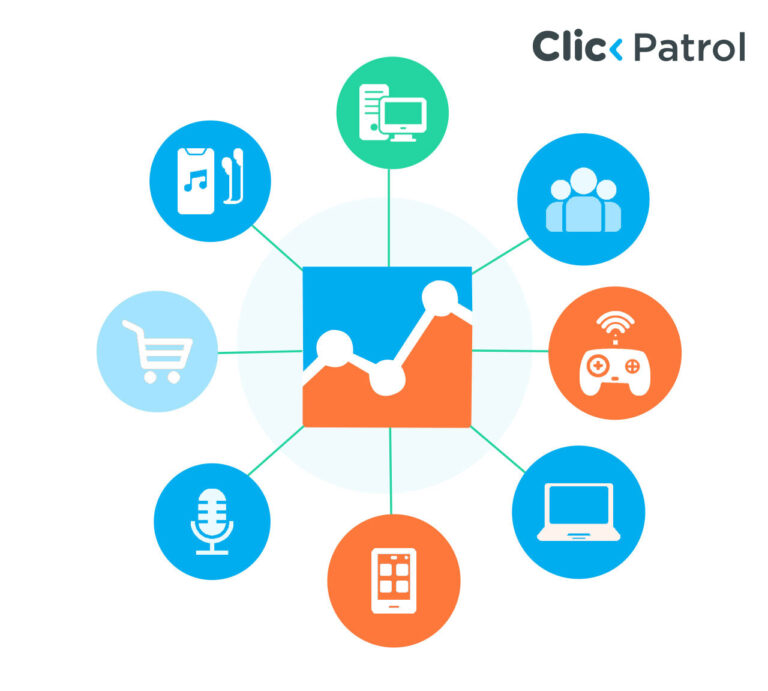
Top Ad Fraud Case Studies and Strategies to Safeguard Digital Investments
Abisola Tanzako | Jul 25, 2024

Table of Contents
- Understanding ad fraud
- Anatomy of ad fraud
- 1. Initiation phase: Motives and methods
- 2. Escalation phase: Concealment and complexity
- 3. Discovery phase: Detection and countermeasures
- Ad fraud case studies
- Strategies to combat ad fraud
- 1. Strengthening digital defenses
- 2. Enhancing transparency and accountability
- 3. Empowering data-driven insights
- 4. Implement ad verification tools
- 5. Adopt blockchain technology
- 6. Employ multi-layered authentication
- 7. Engage in industry collaboration
- 8. Monitor campaign performance continuously
- 9. Educate stakeholders
- 10. Conduct regular audits and assessments
- Strengthen your business defenses
- FAQS
One question marketers often ask is this: Are Ad fraud case studies insightful?
Advertising is essential in today’s business environment, serving as a key element for engaging consumers and driving growth across industries. Despite its crucial role, digital advertising faces a strong opponent: ad fraud. This widespread issue threatens the integrity of advertising campaigns, reduces consumer trust, and drains financial resources.
This article examines various case studies and draws upon industry insights to explain the complex mechanisms of ad fraud. Furthermore, it proposes effective strategies to strengthen defenses against fraudulent activities, ensuring sustainable and trustworthy digital advertising practices.
Understanding ad fraud
Ad fraud involves dishonestly tricking digital advertising systems to make money. It includes creating fake clicks or impressions, using bots to fake engagement, or manipulating metrics. These deceptive practices damage the credibility of advertising campaigns and reduce trust from consumers and businesses. They also waste money by directing funds towards fake interactions instead of reaching real audiences.
Detecting and stopping ad fraud requires advanced technology and analytics to protect investments and ensure that digital advertising remains reliable and effective. This fraudulent activity costs a lot, with estimates indicating losses of up to $120 billion annually.
Anatomy of ad fraud
1. Initiation phase: Motives and methods
Ad fraud typically begins with the primary motive of financial gain. Fraudsters exploit vulnerabilities within digital advertising networks by employing various deceptive methods. These can include using automated bots programmed to generate fake ad clicks or impressions. Another technique involves setting up click farms, where individuals are paid to click on ads repeatedly, artificially inflating engagement metrics.
By exploiting these vulnerabilities, fraudsters aim to siphon advertising budgets into their pockets, diverting funds away from legitimate advertising efforts.
2. Escalation phase: Concealment and complexity
As advertisers and platforms develop methods to detect fraudulent activities, fraudsters evolve their tactics to remain undetected. They employ sophisticated techniques such as domain spoofing, where the fraudster creates fake websites that mimic legitimate ones to deceive advertisers into placing ads on them. Additionally, pixel stuffing involves loading numerous ads into a single pixel, making it appear that multiple ads have been displayed, thereby inflating impression metrics.
These methods need to be more explicit about advertising campaigns’ true impact and effectiveness, making it challenging for advertisers to assess the return on their investments accurately.
3. Discovery phase: Detection and countermeasures
Detecting ad fraud requires advanced technologies such as analytics and machine learning. These tools examine extensive datasets to pinpoint irregularities and patterns indicative of fraudulent activity. For example, anomalies may include unusually high click-through rates or discrepancies between expected and actual user behavior.
By swiftly detecting these anomalies, advertisers can take proactive measures to mitigate losses, such as suspending ads on fraudulent websites or adjusting campaign strategies. Implementing anti-fraud measures protects advertising investments and helps maintain trust and integrity within the digital advertising ecosystem.
Ad fraud case studies
1. Methbot
Methbot was a fraudulent traffic syndicate that mimicked human interaction to exploit weaknesses in automated ad-buying systems. It deceived advertisers into paying for non-existent engagement by generating fake views and interactions, highlighting vulnerabilities in digital advertising technology. Methbot operated as a massive fraudulent scheme exploiting weaknesses in digital advertising systems for substantial profit. Led by Aleksandr Zhukov, it posed as an advertising network named Media Methane.
At its peak from 2014 to 2016, Methbot orchestrated between 200 to 400 million fabricated video ad views daily using over 2,000 servers and 650,000 residential IP addresses. This setup simulated genuine user interactions with ads, including fake clicks and video views, across over 6,000 spoofed domains, including renowned sites like vogue.com and espn.com.
Methbot utilized distributed servers in Dallas and Amsterdam, running multiple browser components and proxies to mask IP addresses. Unlike typical ad fraud operations using data center IPs, Methbot rented residential IPs with falsified registration details, making the traffic appear legitimate from significant ISPs like Verizon and Comcast.
Technologically, Methbot leveraged open-source software such as Node.js for browser operations, tough-cookie for managing persistent identities like fake Facebook logins, and JWPlayer for interacting with video ads programmatically. It simulated various browsers and operating systems, faked screen data, and mimicked human inputs like mouse movements and clicks. These strategies evaded detection by anti-fraud systems and deceived advertisers into paying high CPM rates for non-existent engagement.
Methbot’s operation was eventually dismantled through collaborative efforts within the industry and law enforcement, underscoring its status as one of the largest and most sophisticated ad fraud schemes ever uncovered. This case highlights ongoing challenges in combating ad fraud and emphasizes the need for strong measures to safeguard digital advertising investments against such complex schemes.
2. 3ve
3ve operated as a sophisticated ad fraud scheme from 2014 to 2018. It utilized botnet networks of compromised computers to generate fraudulent ad traffic. The operation aimed to deceive advertisers by simulating user activity, such as clicks and ad impressions, on a massive scale. By inflating engagement metrics through automated scripts and proxy servers, 3ve misled advertisers into believing their campaigns were more successful than they were.
This fraudulent activity resulted in significant financial losses for advertisers who paid for ad placements that did not reach real users or generate genuine engagement. The scheme was dismantled through a collaborative effort involving cybersecurity researchers, law enforcement agencies, and industry stakeholders. This joint action was crucial in identifying and disrupting the botnet infrastructure that supported 3ve’s operations.
Legal proceedings also followed, leading to the prosecution of individuals involved in the fraud. The case highlighted the ongoing challenges in combating sophisticated ad fraud and underscored the importance of implementing cybersecurity measures and maintaining vigilance within the digital advertising industry.
3. Uber’s attribution fraud
Uber’s attribution fraud case emerged as a significant instance of misaligned advertising attribution within digital marketing strategies. The issue arose when Uber’s advertising spend was attributed to app installs and user engagements that did not occur, highlighting flaws in their attribution models. This discrepancy came to light through internal audits and data analysis by Uber’s marketing teams, revealing inconsistencies between reported conversions and user behavior.
Prompted by these findings, Uber undertook a comprehensive reassessment of its advertising ecosystem, implementing rigorous monitoring and verification processes to ensure ad spend accurately reflected genuine user interactions. In response to the fraud, Uber updated its attribution models to better differentiate between valid and fraudulent conversions. This included working closely with industry professionals and utilizing advanced analytics to uncover anomalies and questionable trends in advertising performance data.
Uber aimed to protect its advertising investments and uphold transparency in its marketing practices by enhancing its fraud detection capabilities and refining attribution methodologies. Additionally, in 2017, Uber took legal action against Fetch Media, a digital advertising agency, alleging that Fetch Media had billed Uber for fraudulent ads and misrepresented the effectiveness of its campaigns. The lawsuit underscored Uber’s commitment to holding advertising partners accountable and seeking restitution for damages caused by deceptive practices.
This legal initiative formed part of Uber’s broader efforts to combat ad fraud. It aims to set standards for integrity and transparency in digital advertising practices across the industry.
Strategies to combat ad fraud
To effectively combat ad fraud, businesses can implement comprehensive strategies aimed at protecting their digital advertising investments and maintaining trust with stakeholders:
1. Strengthening digital defenses
Enhancing the security infrastructure is crucial. This involves implementing robust security protocols and deploying advanced anti-fraud technologies such as ClickPatrol. These measures are intended to detect and minimize threats from automated traffic, botnets, and other fraudulent activities that artificially inflate ad metrics. By fortifying digital defenses, companies can create a more resilient environment that safeguards against potential fraud attempts.
2. Enhancing transparency and accountability
Transparency is key to building trust in digital advertising. Companies can achieve this by adhering to industry standards and implementing rigorous verification processes. These practices ensure that reported ad performance metrics are accurate and verifiable, providing advertisers with clear insights into their campaigns’ performance. By maintaining accountability and transparency, businesses foster stronger relationships with advertisers and demonstrate their commitment to ethical advertising practices.
3. Empowering data-driven insights
Using advanced analytics and machine learning capabilities is essential for proactive fraud detection. These technologies enable businesses to analyze large volumes of data, identifying anomalous patterns and suspicious activities indicative of fraud. By using data-driven insights, companies can swiftly detect and respond to fraudulent incidents, minimizing the impact on ad campaigns and maximizing ROI.
This proactive strategy enhances defenses against ad fraud and enables businesses to make informed decisions using actionable insights.
4. Implement ad verification tools
Use third-party ad verification services to detect and prevent fraudulent activities. These tools can validate the quality of traffic sources, verify ad placements, and ensure compliance with industry standards.
5. Adopt blockchain technology
Using blockchain to enhance transparency and traceability in digital advertising transactions. Blockchain-based platforms can provide immutable records of ad impressions, clicks, and conversions, reducing the risk of fraudulent activities like click fraud and fake traffic.
6. Employ multi-layered authentication
Implement multi-factor authentication (MFA) to access advertising platforms and data management systems. This additional security measure aids in preventing unauthorized access and potential breaches that may facilitate ad fraud schemes.
7. Engage in industry collaboration
This collaborative effort fosters knowledge sharing and promotes the establishment of standardized guidelines and innovative solutions. Through these partnerships, industry stakeholders can work towards enhancing the resilience of the digital advertising ecosystem. This proactive approach mitigates risks and empowers businesses to make informed decisions based on reliable data and actionable intelligence.
Together, we can strengthen the industry’s defenses and ensure a more secure and trustworthy digital advertising environment for all stakeholders involved.
8. Monitor campaign performance continuously
Regularly monitor key performance indicators (KPIs) and metrics associated with ad campaigns. Establish benchmarks for expected performance based on historical data and industry norms. Any deviations from these benchmarks can signal potential fraud and warrant further investigation.
9. Educate stakeholders
Educate advertisers, agencies, and internal teams about the risks of ad fraud and how to identify suspicious activities. Foster a culture of vigilance and transparency across all levels of the organization to mitigate vulnerabilities and respond effectively to emerging threats.
10. Conduct regular audits and assessments
Conduct periodic audits of advertising platforms, traffic sources, and data analytics processes. Evaluate how well current fraud prevention methods and identify areas for improvement. Regular assessments help maintain compliance with evolving industry standards and regulatory requirements. By implementing these strategies, businesses can effectively mitigate the risks associated with ad fraud, protect their advertising investments, and uphold the integrity of digital advertising practices.
These efforts contribute to a more secure and transparent digital advertising ecosystem, benefiting businesses and consumers.
Strengthen your business defenses
Ad fraud poses a severe threat to digital advertising’s honesty and success. This article has examined how fraudsters use tricky tactics to exploit weaknesses in digital ad systems, causing significant financial losses and damaging trust among businesses and consumers. Through case studies like Methbot and Uber’s attribution fraud, we have seen the clever methods fraudsters use and how their actions affect many.
These examples show why it’s vital for industries to work together and take action early to fight ad fraud. Businesses need to strengthen their defenses with new tech and careful monitoring. Being transparent and honest about ad performance is key to building trust and ensuring ads reach the right people. By taking these steps, businesses can reduce the risks of ad fraud, protect their investments, and keep digital advertising trustworthy. This active approach secures money and builds a safer, more reliable digital advertising world for everyone.
FAQS
Q. 1 What are the common signs that indicate ad fraud might be occurring in a digital advertising campaign?
Ad fraud often manifests through unusually high click-through rates (CTRs) or engagement metrics that do not align with expected user behavior. Sudden spikes in traffic from specific regions or times of day can also be indicators. Monitoring these metrics closely can help identify potential fraud early.
Q. 2 How does ad fraud impact businesses beyond financial losses?
Ad fraud drains advertising budgets, erodes consumer trust, and damages brand reputation. Businesses may inadvertently support fraudulent activities, leading to legal repercussions and regulatory scrutiny.
Q.3 What steps can advertisers take to minimize the risk of ad fraud?
Implementing strong anti-fraud measures such as ad verification services, deploying AI-driven fraud detection tools, and collaborating with reputable publishers and ad networks can significantly reduce the risk. Regular audits of advertising data and contracts with clear fraud protection clauses are also advisable.





